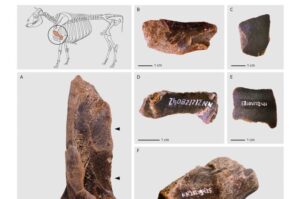
WASHINGTON — On July 1, a Falcon 9 rocket successfully launched a European satellite designed to perform dual missions of collecting weather data and monitoring atmospheric pollution. This launch marks a significant step in enhancing Europe’s capabilities in environmental monitoring and climate science.
The satellite, part of a collaborative effort between European space agencies, aims to provide critical data that will improve weather forecasting and contribute to a better understanding of climate change impacts. The mission underscores the growing importance of space-based technologies in addressing global environmental challenges.
Mission Objectives and Technical Details
Developed by the European Space Agency (ESA) in partnership with other European institutions, the satellite is equipped with advanced instruments capable of measuring various atmospheric parameters. These include temperature, humidity, and levels of pollutants such as nitrogen dioxide and sulfur dioxide.
The satellite’s data will be crucial for weather services across Europe, providing more accurate forecasts and early warnings for severe weather events. Additionally, its pollution monitoring capabilities will help track air quality and assess the effectiveness of environmental policies.
Technological Innovations
Equipped with cutting-edge sensors, the satellite represents a leap forward in satellite technology. Its instruments can detect minute changes in atmospheric composition, allowing scientists to monitor pollution sources and transport patterns with unprecedented precision.
The satellite’s ability to provide high-resolution data on a global scale is a game-changer for both meteorology and environmental science.
Historical Context and Global Implications
This development follows a series of successful launches by SpaceX, which has become a key player in the commercial space industry. The Falcon 9’s reliability and cost-effectiveness have made it a preferred choice for both governmental and private sector satellite launches.
Historically, Europe has relied on a combination of national and international efforts to advance its space capabilities. The launch of this satellite represents a significant milestone in the continent’s efforts to establish a more autonomous and robust space infrastructure.
Global Collaboration
The mission is part of a broader trend of international collaboration in space exploration and utilization. By sharing data and resources, countries can tackle global challenges more effectively, from climate change to disaster response.
According to the European Space Agency, the satellite’s data will be shared with partners worldwide, enhancing global efforts to combat environmental issues.
Expert Opinions and Future Prospects
Experts in the field of atmospheric science have praised the mission as a critical advancement in environmental monitoring. Dr. Maria Gonzalez, a leading climate scientist, noted that the satellite’s data will provide invaluable insights into the dynamics of Earth’s atmosphere.
“This satellite will allow us to track pollution and weather patterns with a level of detail that was previously unattainable,” Dr. Gonzalez said. “It will be instrumental in formulating more effective climate policies.”
Looking Ahead
The success of this mission paves the way for future collaborations and technological advancements in space-based environmental monitoring. As the effects of climate change become increasingly apparent, the demand for accurate and timely data will continue to grow.
Meanwhile, the satellite’s launch highlights the potential for space technology to play a crucial role in addressing some of the world’s most pressing environmental challenges. With continued investment and innovation, the future of space-based monitoring looks promising.
As the satellite begins its mission, scientists and policymakers alike will be watching closely to see how its data can be leveraged to improve our understanding of the planet and inform decision-making processes worldwide.





